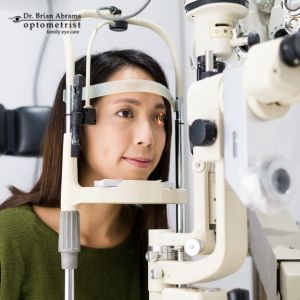Cataracts are an eye condition that causes cloudiness in the lens of the eye. This cloudiness that develops in the lens of the eyes becomes a chronic issue that interferes with the clarity of your vision. Cataracts can develop for a number of reasons; some children are born with cataracts, whereas others develop the condition with age. Certain risk factors like genetics, sun exposure, trauma to the eyes, smoking, and diabetes increase your chances of experiencing cataracts. In fact, over 32% of adults over the age of 45 years old with diabetes also experience cataracts. To protect your visual acuity and minimize the effect of cataracts, book an adult or diabetic eye exam with Dr. Brian Abrams, a trusted optometrist in Woodbridge. Our team will help you identify the onset of the condition and provide you with treatment options to restore comfort and clarity to your life.
Look out for these signs of cataracts in you and your loved ones, and learn when to book your visit with Dr. Brian Abrams.
Blurry Vision

The most noticeable sign of a cataract developing is a blurry vision that comes on gradually or worsens over time. Cataracts can create the feeling of a hazy or cloudy filter as you look at the world around you, making it more challenging to see details in the dark. If you’re experiencing a change in the quality of your vision, book an eye exam with Dr. Brian Abrams. If you also have diabetes, talk to your optometrist about scheduling a diabetic eye exam. Our team understands the effects diabetes can have on your vision and life, and we provide treatment options tailored to you.
Sensitivity to Light
The ability to receive light plays a significant role in your ability to see. When cataracts develop, it can create a sensitivity to light, leaving you feeling uncomfortable or unable to look ahead at lights such as streetlights, overhead lights, headlights, and more. You may also notice a halo effect around lights, which is when you see a ring of light or a circle around light sources. This effect can distort your vision and interfere with your ability to identify other obstacles near light sources. If you’re noticing a halo effect, you may confuse it with astigmatism. To be confident the correct condition is being addressed, visit your optometrist in Woodbridge.
Difficulty Seeing at Night
In dark areas or outside at night, the lack of light can make seeing even more difficult with cataracts. Because the condition clouds the lens and changes how the eye receives light, seeing defined shapes and lines in the dark is more of a challenge. This can be dangerous when driving and challenging when reading and conducting other activities that require visual acuity in the nighttime.
Treat Cataracts with Your Reputable Optometrist in Woodbridge
Cataracts can be incredibly frustrating and challenging as they develop. Visiting your local optometrist in Woodbridge, Dr. Brian Abrams, can help you protect your eyes by identifying conditions like cataracts and providing tailored and effective treatment plans. To explore cataract treatments or schedule a comprehensive eye exam with Dr. Brian Abrams.


